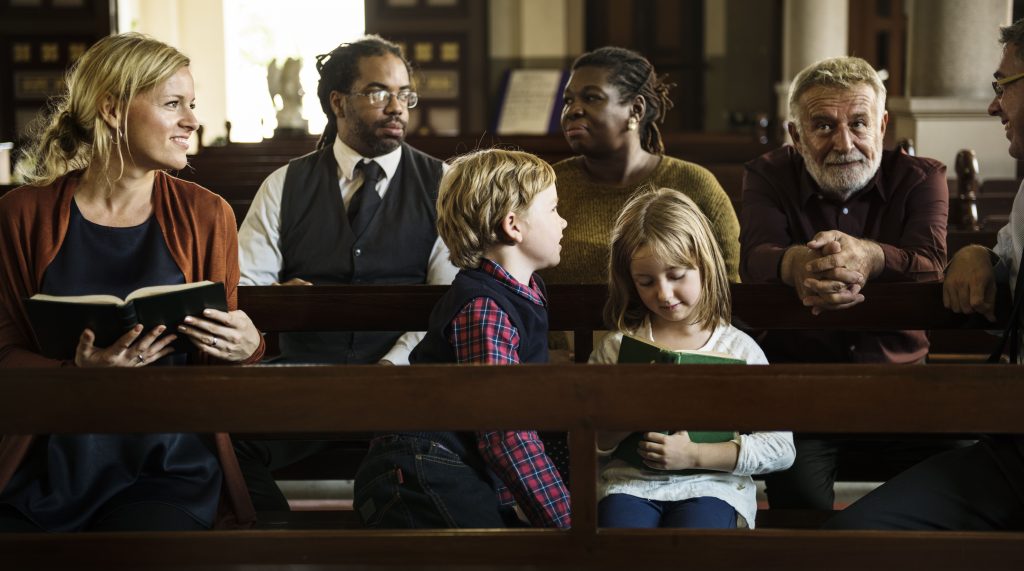In the Mass, our Eucharistic Prayer begins with the Preface Dialogue. The dialogue between presider and assembly starts with a call to deepen our participation, a call for the spiritual ascent of our hearts: “Lift up your hearts.” We give our hearts to God. This sets the tone of our Eucharistic Prayer as a prayer of love, and love is the purpose for which God created. We answer: “We lift them up to the Lord,” and this lifting up is not just that of our individual hearts. Together we lift up the collective heart of our community.
The church document “The General Instruction of the Roman Missal” (GIRM No. 78) speaks of the Eucharistic Prayer as follows: “The priest calls upon the people to lift up their hearts towards the Lord in prayer and thanksgiving; he associates the people with himself in the Prayer that he addresses in the name of the entire community to God the Father through Jesus Christ in the Holy Spirit. Furthermore, the meaning of this Prayer is that the whole congregation of the faithful joins with Christ in confessing the great deeds of God and in offering the Sacrifice.”
Too often we think of the Eucharistic Prayer as only “Father’s Prayer.” GIRM No. 78 makes clear that this is not the case. The presider serves as the one voice of the assembly. He addresses God in the name of the entire community. The Eucharistic Prayer is “our” prayer. The presider is one with the assembly, not separate and apart. The whole assembly joins together as one body in the sacrifice of Christ.
Let’s break it down and take a closer look at the eight parts of our Eucharistic Prayer. You can easily obtain a copy of one of our Eucharistic prayers either online or in a missalette:
> The thanksgiving (preface): WE glorify God and give thanks for Christ, our salvation;
> The acclamation (Holy, Holy, Holy): WE join our voices in song with all the powers in heaven;
> The epiclesis: WE call upon the power of the Holy Spirit that these gifts and our actions be imbued with holiness;
> The consecration: WE speak the words and actions instituted by Christ at the Last Supper, and perpetuate the sacred mystery of Christ’s presence among us;
> The anamnesis: WE recall the saving work of God through Jesus Christ, for all of humanity — past, present and future;
> The oblation: WE offer ourselves as one with the sacrifice of Jesus Christ, on behalf of the world;
> The intercessions: WE ask the whole church, heaven and earth, to be one with us in this sacrifice of Christ; and
> The concluding doxology — the arch of OUR prayer brings us back to glorifying God, acclaiming (Amen) OUR part in the body of Christ.
When reflecting upon our liturgical participation, it can be helpful to meditate on Eucharist as a verb, not just a noun. The writing of Justin Martyr in the year 155 is one of the earliest manuscripts that refers to the ritual gathering of Christians for the sharing of the bread and wine as Jesus did at the Last Supper.
There is a loose translation of this passage of Justin Martyr’s that refers to this “Eucharisted” bread and wine that the community shared. This might not be an accurate translation, but it is nonetheless interesting. This bread and wine, by word and action, have now become imbued with the thanks and praise of the whole community gathered. This is Eucharist as verb, an action in which the whole community participates.
Even though the action of all but the presider during our Eucharistic Prayer is predominantly silence, we should not confuse that as non-participation. Our silence during the prayer is not for private prayer or non-attentiveness. It is, in fact, a solemn, shared, full, conscious and active silence. It is a silence with which we together hold up the weight of the mystery of Christ’s presence among us. Our physical presence as individuals is overshadowed by our oneness of spirit.
If we truly practice this spiritual exercise of lifting up our hearts to God week after week in our Eucharistic Prayer at Mass, it will teach us how to offer that spiritual ascent to God in our everyday lives, and it will strengthen our community. Together, we are like a puzzle. When one piece is missing, the whole is incomplete. Everyone at Mass, young, old and in between, holds a piece of the mystery. If we each participate fully, our community becomes something more, a stronger presence. Together we become a wholeness that can transforms lives and change the world.

